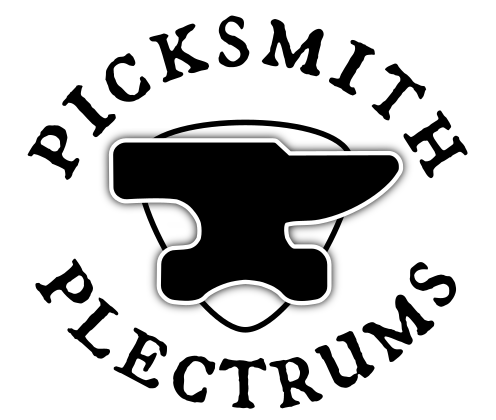About the Bevel
Have you ever used a pick, and for a reason you couldn’t figure out you just loved it? Or the opposite, you picked it up and you didn’t feel connected? This is because of the bevel, how a pick company does their shaping around the playing tip. It influences more than most people realize.
I doubt anyone in the world has put as much research into understanding and perfecting pick bevels as I have. From the very beginning I knew I wanted exceptional bevels to be the cornerstone of my work, but to do that, I had to learn how bevels influence feel and tone. I had made picks as a hobby for years and had a very basic knowledge of bevel design, but about a year before I opened, I decided to go all in. I refused to release my picks until I felt I could craft a bevel that was both exceptional and repeatable, and for a year I persevered. Aiming to push boundaries, I experimented with things like sanding methods, angles, and amounts of material removal through hundreds of prototypes. I also didn’t want to rely on my feelings alone during trials, so I conducted group testing with ongoing discussions. For a while, handing somebody a pick and hearing “meh” was a regular occurrence. Some people would even take picks home and tell me how they felt over time, but the best bevel people knew was great, right away. When that “meh” turned to a wide eyed “wow”, I realized I’d finally found it. That’s now the bevel I’ve been refining ever since. I receive comments regularly from people who’ve gotten so used to it they claim they can’t go back. You’ll feel the difference.
Usual benefits you’ll experience are:
Increased speed
Buttery smoothness
Cleaner picking
Boosted presence
Enhanced volume
More playable positions
Less energy input
Better wear patterns
I expect some companies to try and copy the hard work I’ve put in, but know that nothing plays or sounds like a Picksmith.

